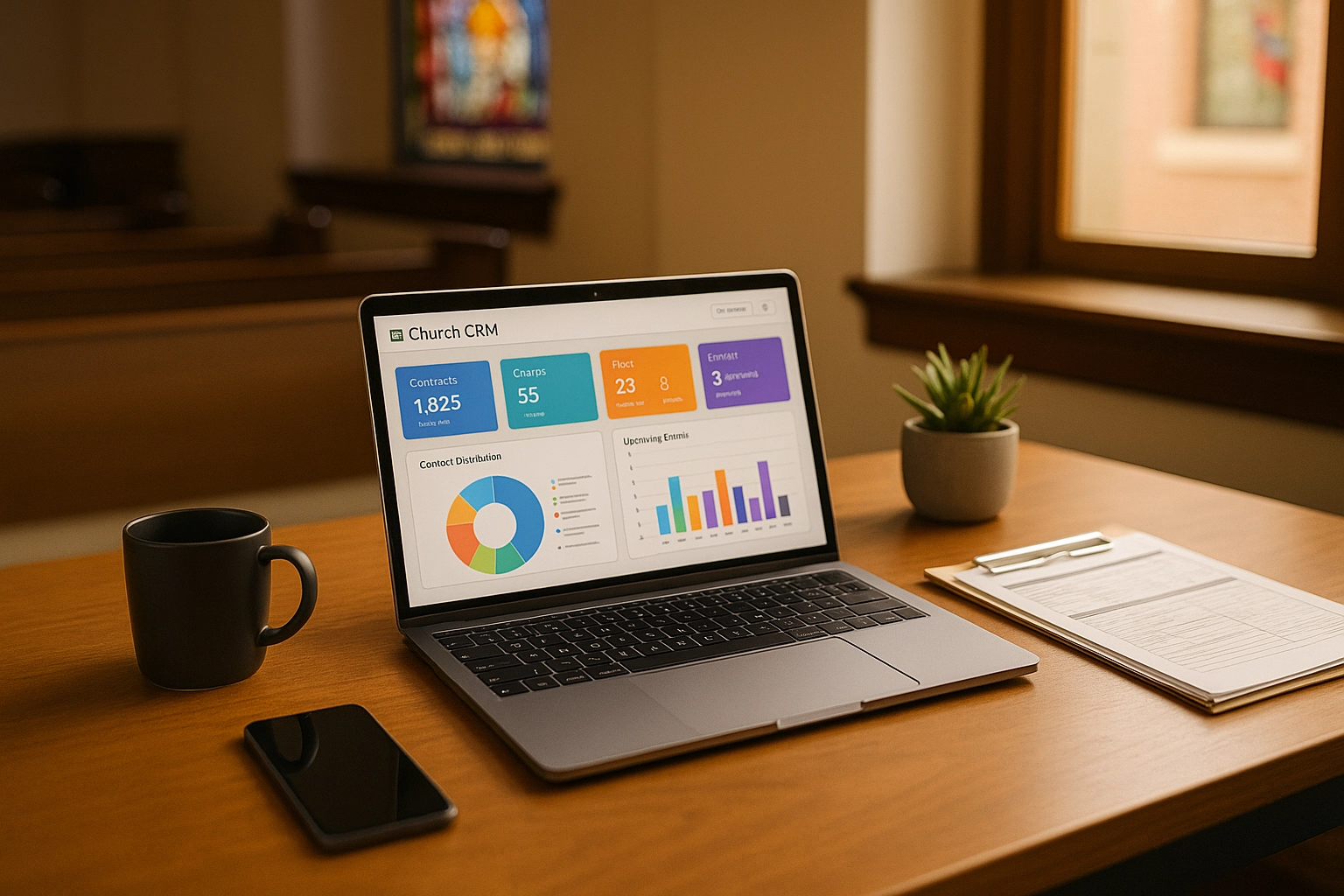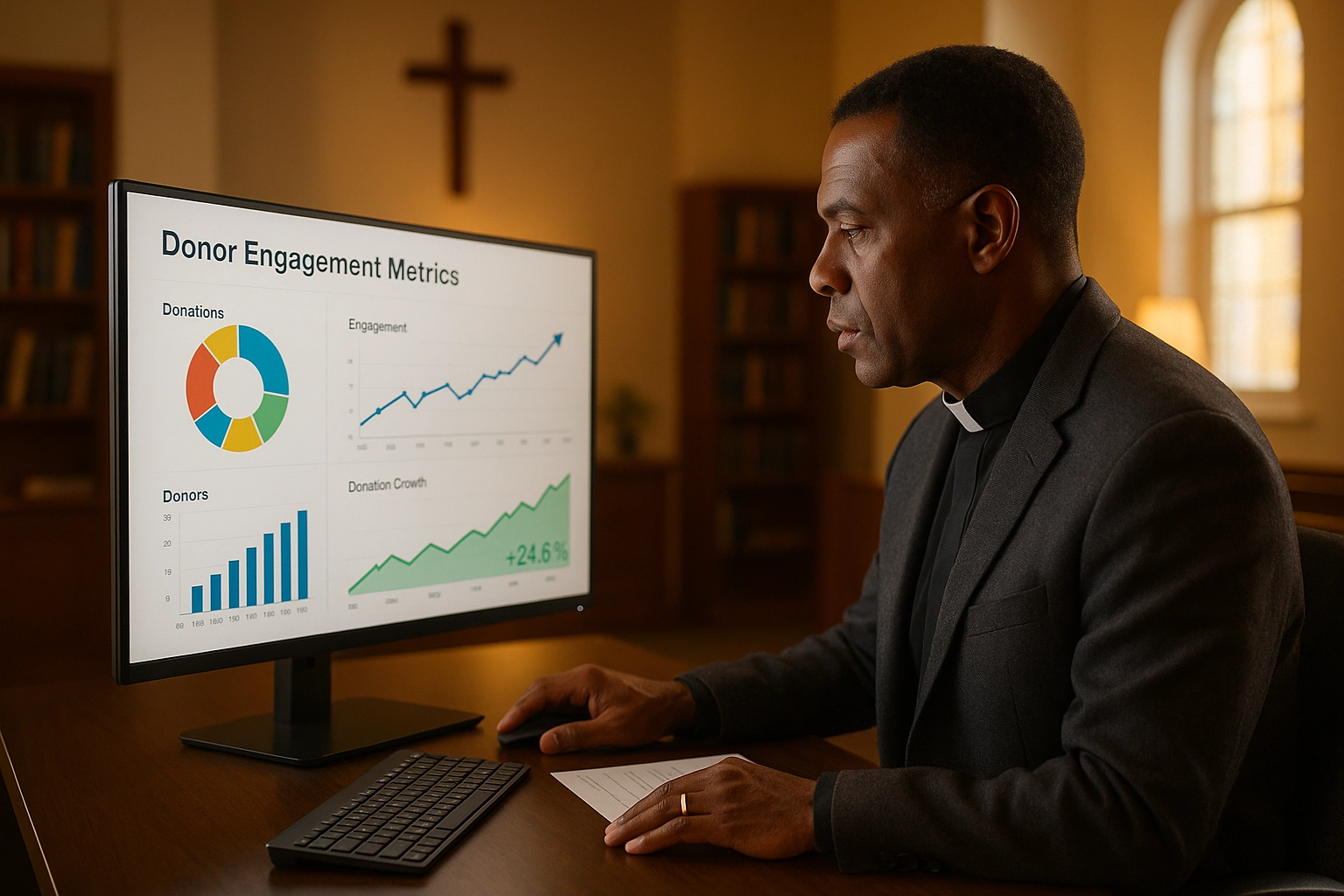Managing donor relationships manually can overwhelm even the most organized church staff. Between thank-you notes, donation receipts, and follow-up messages, it's easy to fall behind on meaningful communication with your supporters.
Automated donor communication helps churches maintain consistent, personal connections with their congregation while freeing up time for ministry work. By setting up simple automation workflows, your church can send timely thank-you messages, donation receipts, and stewardship updates without constant manual effort. This approach ensures no donor feels overlooked while reducing administrative burden on your team.
The good news? You don't need a tech degree to get started. Let's walk through five straightforward steps to automate your church's donor communication effectively.
Step 1: Choose the Right Church CRM Platform
Your donor communication automation starts with selecting a platform designed specifically for ministry needs. Look for church management software that combines donor tracking, email automation, and reporting features in one place.
Key features to prioritize include:
• Email automation workflows that trigger based on donation activity
• Integration with online giving platforms for seamless data flow
• Customizable message templates for different donor segments
• Mobile-friendly interface for on-the-go access
• Affordable pricing that fits your church budget
Popular options include Planning Center, ChurchTrac, and Breeze, though many churches also find success with general CRM platforms like Grow Ministry's solutions that offer church-specific customizations.
What's your biggest challenge with donor management right now? Understanding your pain points helps you choose features that will make the biggest impact.

Step 2: Set Up Your Donor Database and Segments
Clean, organized donor data forms the foundation of effective automation. Start by importing your existing donor information into your chosen platform, including contact details, giving history, and engagement preferences.
Create meaningful donor segments such as:
• First-time givers who need welcome messages and information about your ministry
• Regular supporters who appreciate consistent stewardship updates
• Major donors requiring personalized attention and special recognition
• Lapsed donors who haven't given recently and might benefit from gentle re-engagement
Don't forget to capture communication preferences during your data entry process. Some members prefer email updates while others respond better to text messages or phone calls.
Pro tip: Use your church's online giving form to automatically collect donor information and preferences. This reduces manual data entry and ensures accuracy from the start.
Step 3: Create Automated Thank-You and Receipt Workflows
Timely gratitude makes donors feel valued and more likely to give again. Set up automated workflows that trigger immediately after someone makes a donation.
Your basic thank-you automation should include:
• Instant receipt email with donation details and tax information
• Personal thank-you message from your pastor or ministry leader
• Impact story showing how their gift makes a difference
• Next steps for getting more involved in your church community
Customize these messages based on donation amount and donor history. A first-time $25 gift deserves different messaging than a $1,000 contribution from a longtime member.
Research shows donors are four times more likely to give again when thanked within 48 hours, making automation essential for maintaining this quick response time consistently.

Step 4: Build Ongoing Stewardship Communication
Beyond thank-you messages, donors want to see the impact of their generosity. Create automated sequences that keep supporters engaged throughout the year.
Effective ongoing communication includes:
• Monthly ministry updates highlighting recent accomplishments and upcoming needs
• Annual giving statements summarizing their total contributions and tax benefits
• Special campaign announcements for building projects, mission trips, or community outreach
• Birthday and anniversary messages that show personal attention
Schedule these communications strategically. Send ministry updates at the beginning of each month, annual statements in January for tax purposes, and special campaigns aligned with your church calendar.
Remember to include clear calls-to-action in every message. Whether you're asking for prayer, volunteer participation, or additional giving, make it easy for donors to respond and get involved.
Step 5: Monitor Performance and Refine Your Approach
Automation isn't "set it and forget it." Regular monitoring helps you identify what resonates with your donors and what needs improvement.
Track these key metrics:
• Email open rates to gauge subject line effectiveness
• Click-through rates on donation links and ministry updates
• Response rates to specific campaigns or calls-to-action
• Donor retention comparing automated vs. manual communication periods
Most church CRM platforms provide built-in reporting dashboards that make tracking these metrics straightforward. Review your data monthly and adjust your messaging, timing, or segmentation based on what you discover.
Which metric would be most valuable for measuring your ministry's communication success? Focus on the numbers that align with your church's specific goals and growth priorities.

Don't be afraid to experiment with different approaches. A/B test your subject lines, try different sending times, or adjust your message frequency based on donor feedback and engagement levels.
Getting Started This Week
Pick one of these steps to implement this week rather than trying to automate everything at once. Start with basic thank-you workflows since these provide immediate value for both your donors and your administrative team.
Many churches see significant improvements in donor engagement within the first month of implementing basic automation. The key is consistency – automated systems ensure every donor receives timely, professional communication regardless of how busy your church staff gets.
Ready to take your donor communication to the next level? The time you invest in setting up these systems now will pay dividends in stronger relationships and more sustainable funding for your ministry work.
Your congregation deserves thoughtful, consistent communication about their generous support. Automation helps you deliver that personal touch at scale while freeing up your team to focus on what matters most – serving your community and advancing your ministry mission.
Want more insights like this? Subscribe at www.growministry.com.
Questions or partnerships? Call our AI Receptionist at +1 (970) 426-0844.
Dan Kost, CEO , Grow Ministry
If this helped you, please comment, subscribe, and share.
Share this post:
• LinkedIn
• Facebook
• X
• Instagram
#Motivation #Branding #Strategy #Marketing #AdvertisingAndMarketing #digitalmarketing #Innovation #Sports

